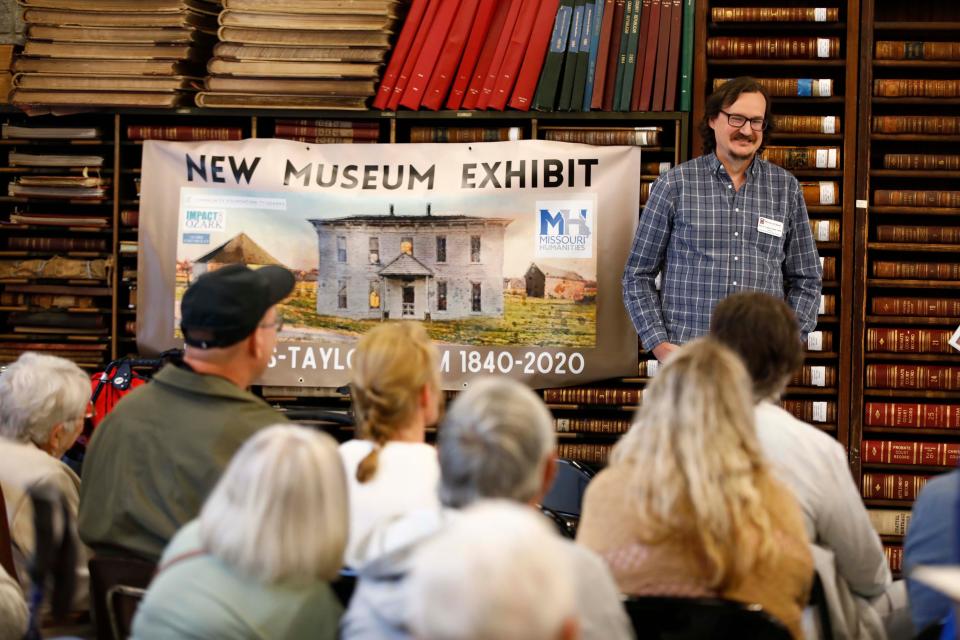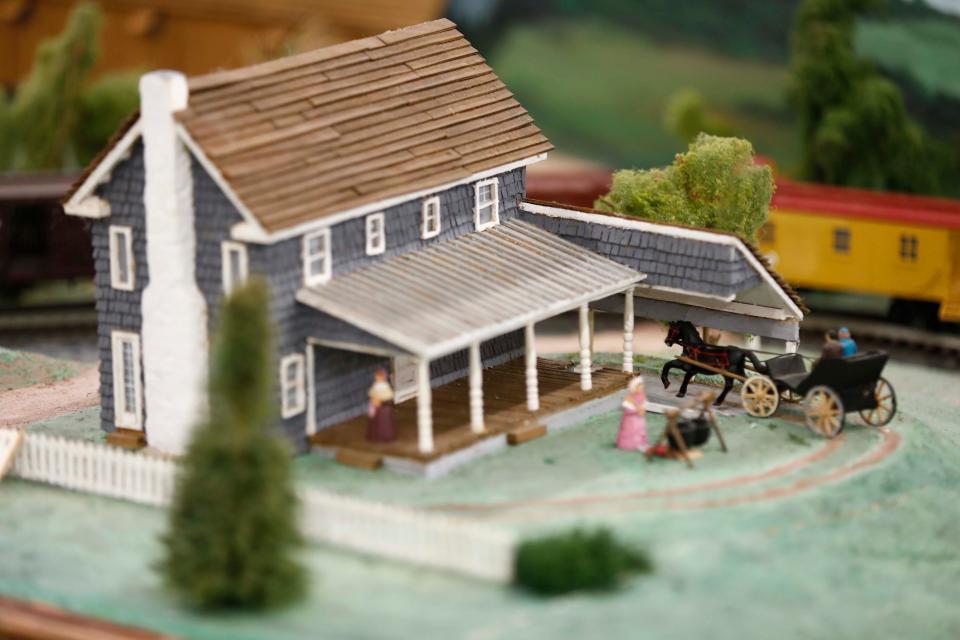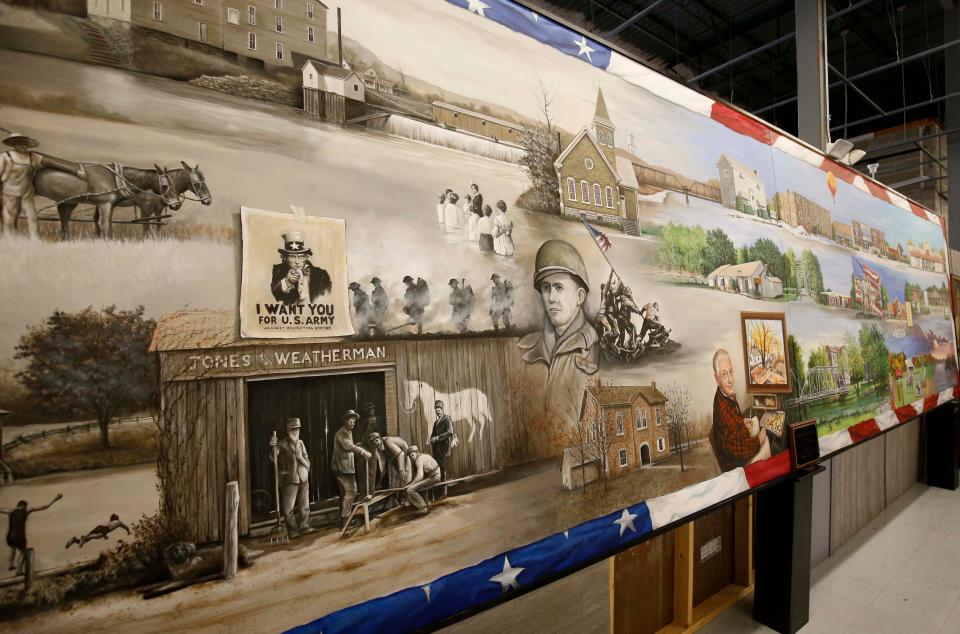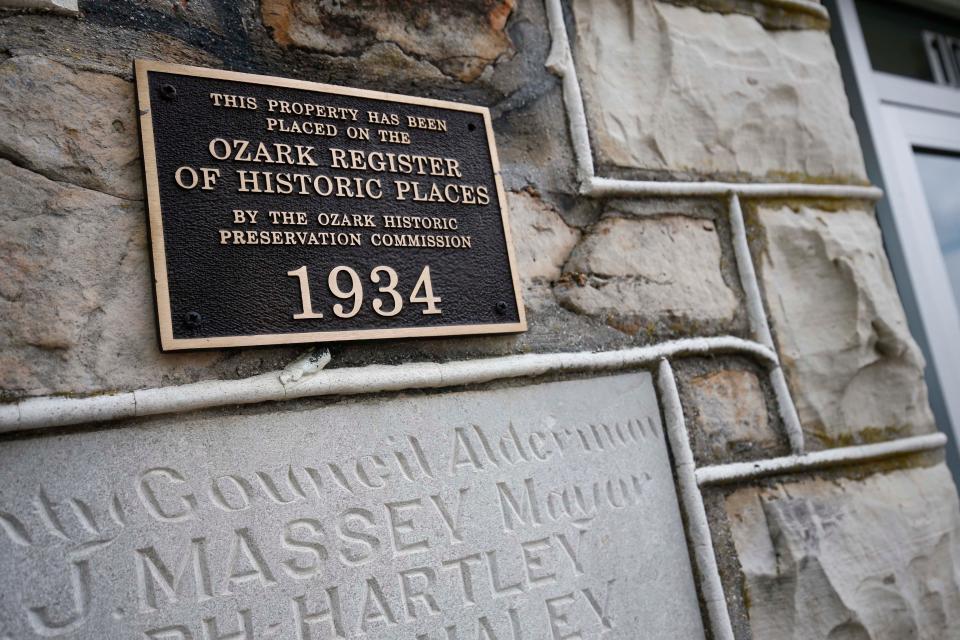Experts worked quickly to save artifacts from former Ozark farm. Now history is on display
Christian County native P.J. Logan's uncle used to take her son around Ozark to visit various Civil War history points of interest. Logan remembers one of these local sites was a farm, just north of Ozark, with a house built by a Civil War soldier. The Mullins-Taylor farm included an octagonal barn and a small brick building, which Logan's uncle had claimed once housed enslaved people.
In 2022, the property came to Logan's attention again. The structures were facing demolition by the current property owner, James River Church. So Logan started sending emails. She reached out to university professors, state offices and other organizations, looking for someone who might care that these historically significant structures were facing destruction. She also started gathering research.
"I remembered what my uncle had told my son, and I thought, 'That's really pretty historically important if the house was built by a Civil War soldier and the brick building could have served as housing for enslaved people,'" Logan said. "And that is how I made the connection with Kevin Cupka Head."

Cupka Head is director of the Bernice C. Warren Center for Archaeological Research at Missouri State University. Building on Logan's research, Cupka Head compiled an accounting of the site’s archaeological, historical, and cultural value and presented it to James River Church officials. Before the buildings were demolished in September 2022, James River granted Cupka Head's team permission to conduct a preliminary examination of the site but denied permission to excavate it. James River Church did not respond to multiple attempts seeking comment for this article.
"The key component here, of course, that sort of raised a red flag as far as significance for us was the potential for a standing building that had housed enslaved persons," said Cupka Head. "There's very few of those existing in Missouri."
The findings of that 2022 examination, combined with archival and historical research, are the centerpiece of a new exhibit at the Christian County Museum in Ozark. Stories of the Mullins-Taylor Farm, 1840-2020, opened Saturday, April 20. Exhibit sponsors include Missouri Humanities, Impact 100, Community Foundation of the Ozarks, and Ozark Chevrolet.
Compiling the research: Who were Thomas Mullins and George Taylor?
Prior to the Civil War, the property housed the sizable commercial and agricultural operation of Thomas Mullins, whose primary enterprise was tobacco production. According to research by Gary Fuenfhausen, president of the Missouri Little Dixie Heritage Foundation, Mullins held five or more enslaved people, who he inherited from his father.
Mullins' antebellum home was likely damaged or destroyed during Civil War conflicts in Christian County. The area was impacted not only by large-scale battles, but also by guerrilla conflicts raging through the Ozarks. According to Logan's and Fuenfhausen's research, the only surviving building of the slave-era Mullins farm was the 1850s brick building.

Logan connected with Fuenfhausen, an expert in Missouri slave dwellings, during her initial search. His research pertains mostly to the Little Dixie region of mid-Missouri, the area along the Missouri River where slavery was most prevalent before the Civil War. Fuenfhausen and Logan assessed the Mullins-Taylor farm from a historical architecture point of view before archaeologists from MSU conducted their examination. They determined that the small brick outbuilding was likely housing or a workspace for enslaved people prior to the Civil War. Archaeologists from MSU agreed.
It also was confirmed, Logan said, that the house was built by Capt. George W. Taylor after the Civil War. The Union soldier purchased the land where the buildings sit from Mullins after completing his service in the war in 1865. Taylor went on to become a regionally renowned agriculturist and entrepreneur, starting a mule-raising operation on the property. He was also involved in business, banking, education, and local government.
MSU Center for Archaeological Research conducts examination, denied excavation of farm site
James River Church did not permit any digging at the site but that didn't stop MSU archaeologists from finding evidence that reinforced the narrative of the Mullins-Taylor Farm. The team, consisting of Cupka Head and research archaeologist Michaela Conway, was permitted to survey the grounds, take interior and exterior photos, and map the site using centimeter-accurate GPS units.
"We were able to get a good documentation," said Cupka Head. "We also did a surface collection of artifacts that we found on the surface at the garden plot."
Cupka Head said those artifacts mostly date to the Taylor family, coming from the late 19th century and early 20th century. A few artifacts, he said, could be pre-Civil War. Items found included square nails, a piece of a porcelain doll, buttons, part of a phonographic disc and various pieces of flat glass. The most compelling artifact found, Cupka Head said, was a small blue hand-blown glass bead.
"It is the type of artifact, and it's of the right age, to sort of be a potential indicator supporting the component of enslaved persons on the site," he said.
The Center for Archaeological Research tried to convince James River Church to come up with alternative uses or rehabilitation for the house and outbuildings on the historic Mullins-Taylor farm. But the church's plan for a parking lot was already in motion and the buildings were demolished in 2022. As an archaeologist, Cupka Head said he was more interested in what lies below the surface — where the asphalt could be preserving additional archaeological finds.

"I know there's likely some stuff— some good archaeological information there," he said. "And so I was hopeful that maybe we could have a field school there, given how close it is to our campus and the significance of it. But as of right now, I don't think that's likely."
More: 'Unconventional' memoir shares stories of childhood in Ozarks hollers during 1930s-'50s
The church did, however, allow the team to observe the demolition and collect additional artifacts from the structure, such as bricks, which have been incorporated into the exhibit. Those bricks were an important part of the research; the bricks from the former slave dwelling aren't uniform and are inconsistently fired. They don't match the bricks from the Taylor house, signaling that the bricks are from an earlier date.
Cupka Head was grateful that James River was willing to donate those artifacts; he added that there are no legal protections in Missouri for cultural resources on private property.
A community of Black Ozarkers before and after the Civil War
Conversations about the Civil War in the Ozarks inevitably lead to conversations about slavery in the Ozarks. Cupka Head said part of the study of history is tracing back threads as far as we can to understand why things happen. He said that period of time is still manifesting itself in various ways today.
There was a much more substantial population of Black Ozarkers in the antebellum and Reconstruction periods, Cupka Head said. Most of them were enslaved, formerly enslaved, or the first generation of emancipated persons. A map from 1860 in the exhibit shows a higher concentration of enslaved persons not only in the deep South, but also in the Little Dixie region of Missouri and in Greene County.

One of the formerly enslaved people spotlighted in the exhibit is Charlotte Horn, who was born in the 1830s. In 1850, she was 12 years old and enslaved by Joseph and Elizabeth (Horn) Miller, who owned the property before Mullins. Records show that 20 years later, Charlotte Horn was living in Christian County as a free woman.
After the Civil War, many formerly enslaved people remained in their communities as tenant farmers or hired help. One such Black Ozarker was Hubbard Horn, who was reported to the be the oldest person in Christian County at his death. Enslaved for 70 years, Hubbard Horn's personal estate was valued at $100 in 1870, when he lived with Charlotte Horn and four children. Reportedly married five times, Hubbard Horn had 25 children and lived to be 104. In 1880, he was a neighbor to the Union captain, Taylor, likely serving as a tenant farmer on the property.
More: Documentary about Black history in Ozarks to premiere June 15 on Ozarks Public Television
In 1876, there were also 22 Black citizens of Ozark with the last name Marley. Betha Marley and her family were recorded as immediate neighbors of Taylor in 1876 and 1880. The exhibit says the household, which included Marley, her son, and two daughters, were also likely tenant farmers on the Taylor property.
"Their stories are important, and they played a huge role in building this region," Cupka Head said. "And it's important to keep our eyes out for anything we can do to commemorate and preserve their legacy."

Logan said all of her roots are in Christian County. And yet, she never heard about slavery existing in her hometown until she was in her forties, when her uncle brought her son to the Mullins-Taylor farm.
"The fact that it existed here is a bit obstructed," Logan said. "I do really value resources like these building that inform us about our past. Because I think knowing about our past is very important in guiding us toward the future."
This article originally appeared on Springfield News-Leader: Mullins-Taylor Farm exhibit puts spotlight on Civil War history

